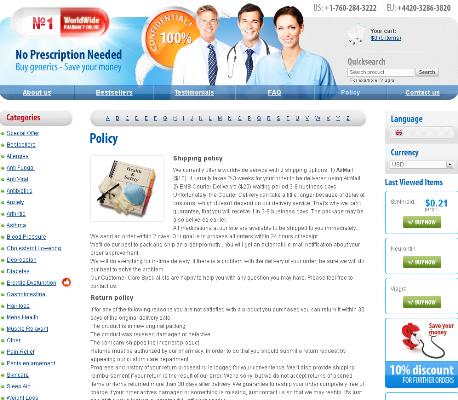Pediatric Uses of Erythromycin: Safety and Guidelines
Common Pediatric Infections Treated with Erythromycin
Children often encounter bacterial infections that require targeted antibiotic therapy. Erythromycin plays a valuable role when penicillin cannot be used, such as in cases of allergy. Physicians frequently prescribe it for respiratory tract infections like whooping cough and pneumonia. Eye conditions, particularly neonatal conjunctivitis caused by Chlamydia or gonorrhea, are also effectively managed with this medication. Its use extends to certain skin and soft tissue infections where other antibiotics are unsuitable or contraindicated.
| Infection | Common Causative Agent | Reason for Erythromycin Use |
|---|---|---|
| Pertussis (Whooping Cough) | Bordetella pertussis | Pencillin Allergy/1st Line Therapy |
| Neonatal Conjunctivitis | Chlamydia trachomatis, Neisseria gonorrhoeae | Effective Prophylaxis & Treatment |
| Community-Acquired Pneumonia | Mycoplasma pneumoniae | Macrolide Sensitivity |
Dosage Recommendations for Different Age Groups

When treating children with erythromycin, it’s important to adjust the medication according to age and weight. Infants and young children typically require lower doses because their bodies metabolize drugs differently than older kids and teenagers. For newborns, a health professional will often prescribe erythromycin based on body weight, ensuring safety and efficacy.
As children grow, the recommended dosage may change, often increasing as a child’s weight increases. Pediatricians follow well-established guidelines that base dosing on milligrams per kilogram, divided into several daily doses to maintain therapeutic levels. Oral liquid suspensions are commonly used for younger children who cannot swallow tablets.
Caregivers should always use precise measuring devices when giving erythromycin to their child to avoid dosing errors. Consulting a healthcare provider ensures the correct dose is given for the child’s specific age and condition.
Potential Side Effects and How to Manage Them
Erythromycin, while effective, may sometimes cause unwanted reactions in children. Common side effects include mild gastrointestinal symptoms, such as nausea, vomiting, stomach pain, or diarrhea. These symptoms can often be minimized by taking erythromycin with food or a full glass of water, unless otherwise directed by a doctor. Less frequently, allergic reactions like rash or itching may occur and should prompt immediate medical attention.
Careful monitoring during the course of erythromycin therapy helps to identify side effects early. Open communication with healthcare providers ensures rapid assessment and adjustment, should side effects arise. Parents should always follow the pediatrician’s instructions and report any concerning symptoms without delay.
Erythromycin Drug Interactions in Children

When introducing erythromycin to a child’s treatment plan, it’s important for parents and healthcare providers to understand how this antibiotic might interact with other commonly prescribed medications. Certain drugs, like antihistamines or anti-seizure medications, can have heightened effects or harmful reactions when combined with erythromycin. For example, some heart rhythm medications can increase the risk of arrhythmias when taken with erythromycin. Ensuring your healthcare provider has a complete list of the child’s medications helps minimize risks and supports safer, more effective treatment.
Precautions for Erythromycin Use in Pediatrics
When prescribing erythromycin to children, careful attention must be paid to underlying health conditions, such as liver dysfunction or a history of gastrointestinal disorders. Since erythromycin is metabolized by the liver, impaired hepatic function can increase the risk of toxicity or adverse reactions. For infants, especially premature or very young babies, there is also a small risk of infantile hypertrophic pyloric stenosis, making close clinical observation essential.
Parents should be instructed to report any unusual symptoms, such as persistent vomiting or abdominal discomfort, immediately. Accurate medication history is crucial as erythromycin can interact with various pediatric medications, especially those affecting cardiac conduction, increasing the risk of cardiac arrhythmias.
| Precaution | Rationale |
|---|---|
| Assess liver function | Prevents drug accumulation and toxicity |
| Monitor for GI symptoms | Early detection of pyloric stenosis |
| Review medication history | Avoid dangerous drug interactions |
Latest Guidelines and Expert Recommendations
Over the past several years, the clinical indications for erythromycin in pediatrics have been refined as new data has emerged and resistance patterns have evolved. Current expert consensus supports its use mainly when alternative antibiotics, like penicillins or cephalosporins, are unsuitable—either due to allergy concerns or specific bacterial susceptibility profiles. For example, erythromycin remains a preferred choice for pertussis (whooping cough) and certain atypical pneumonias, especially in children old enough to tolerate macrolides.
Pediatric infectious disease specialists stress the importance of careful patient selection. Updated pediatric guidelines prioritize confirming bacterial infections with laboratory evidence whenever possible before prescribing erythromycin. Tailoring therapy based on local resistance patterns and individual patient needs helps maximize effectiveness while minimizing the risk of fostering resistance or causing unnecessary side effects.
Parents and caregivers are increasingly encouraged to ask about the necessity and duration of antibiotic courses for their children. Recent expert opinion highlights ongoing vigilance for adverse reactions, encouraging close monitoring—especially for infants and those with underlying health conditions. These recommendations ensure erythromycin remains a valuable, safe tool in pediatric infectious disease management when used judiciously.

